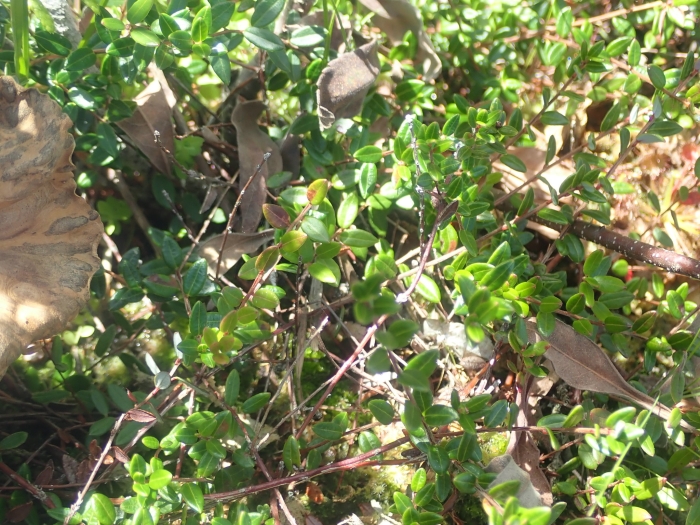Small Cranberry
(Vaccinium oxycoccos)
Small Cranberry (Vaccinium oxycoccos)
/
/

Nolan Exe
CC BY 4.0
Image By:
Nolan Exe
Recorded By:
Copyright:
CC BY 4.0
Copyright Notice:
Photo by: Nolan Exe | License Type: CC BY 4.0 | License URL: http://creativecommons.org/licenses/by/4.0/ | Rights Holder: Nolan Exe | Publisher: iNaturalist | Date Created: 2019-08-28T12:02:40-07:00 |





















Estimated Native Range
Summary
Vaccinium oxycoccos, commonly known as Small Cranberry, is a low-growing, evergreen perennial shrub native to cool temperate regions of the Northern Hemisphere, including North America, Europe, and Asia. It thrives in acidic, nutrient-poor peat bogs, fens, and wetlands, often in association with Sphagnum mosses. Small Cranberry typically forms a dense mat with vine-like, slender stems reaching 10-40 cm long. Its small, leathery, lance-shaped leaves are dark green with a paler underside. From late spring to early summer, it bears solitary, nodding white or pink flowers with a distinctively reflexed corolla, leading to the production of tart, red berries by late summer or autumn.
The Small Cranberry is valued for its edible fruit, which is harvested commercially for culinary uses, including sauces, juices, and preserves. The berries are also rich in vitamins and antioxidants, making them a popular health food. In gardens, this plant is used for ground cover in bog gardens or water features, and it requires consistently moist, acidic soil to thrive. It prefers full sun to part shade and can be propagated by division or from seed. While generally low-maintenance, it can be susceptible to fungal diseases if conditions are too wet.CC BY-SA 4.0
The Small Cranberry is valued for its edible fruit, which is harvested commercially for culinary uses, including sauces, juices, and preserves. The berries are also rich in vitamins and antioxidants, making them a popular health food. In gardens, this plant is used for ground cover in bog gardens or water features, and it requires consistently moist, acidic soil to thrive. It prefers full sun to part shade and can be propagated by division or from seed. While generally low-maintenance, it can be susceptible to fungal diseases if conditions are too wet.CC BY-SA 4.0
Plant Description
- Plant Type: Shrub
- Height: 0.5-1 feet
- Width: 1.5-2 feet
- Growth Rate: Slow
- Flower Color: Pink, White
- Flowering Season: Spring, Summer
- Leaf Retention: Evergreen
Growth Requirements
- Sun: Full Sun, Part Shade
- Water: Medium, High
- Drainage: Slow
Common Uses
Edible*Disclaimer: Easyscape's listed plant edibility is for informational use. Always verify the safety and proper identification of any plant before consumption., Low Maintenance, Water Garden
Natural Habitat
Cool temperate peat bogs, fens, and wetlands
Other Names
Common Names: Small Cranberry, Swamp Cranberry, European Cranberry, Mossberry, Bog Cranberry
Scientific Names: , Vaccinium oxycoccos, Oxycoca vulgaris, Oxycoccos oxycoccos, Oxycoccos palustris, Oxycoccos quadripetalus, Oxycoccus europaeus, Oxycoccus europaeus, Oxycoccus gigas, Oxycoccus intermedius
GBIF Accepted Name: